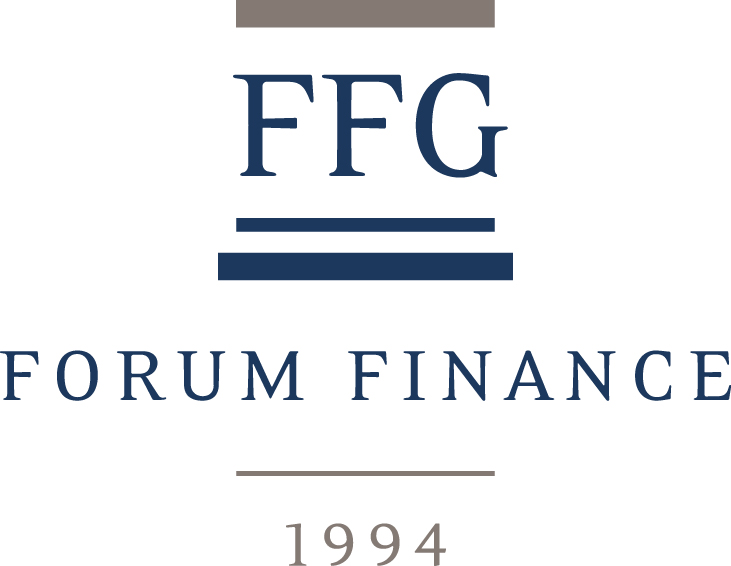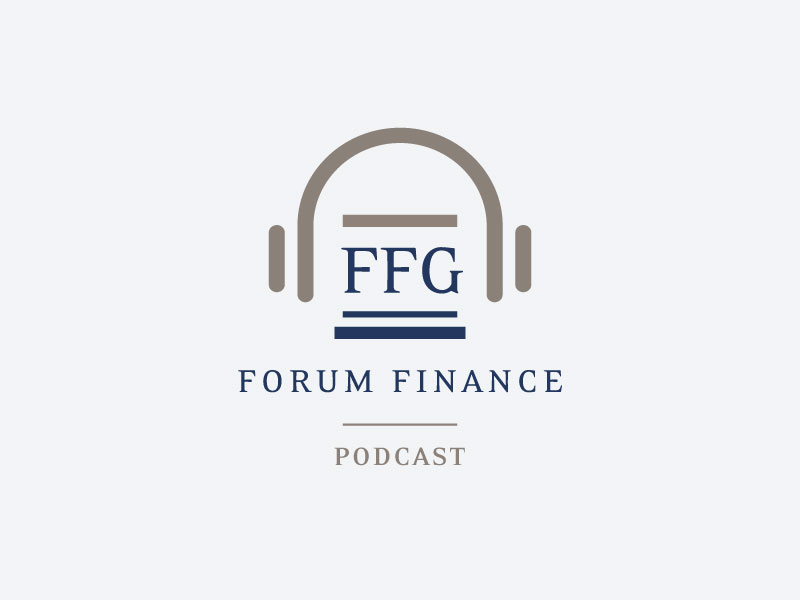Newsletter | September 2023
13 September 2023Newsletter,Financial News
U.S. 10-year yield jumped to 4.34% on growing concerns of supply
- 12.7% THE PERFORMANCE OF WHEAT INDEX IN AUGUST
Investment perspective
The resilience of the U.S. economy and falling inflation led to a wider adoption of the soft landing scenario. However, the release of stronger-than-expected figures and a hawkish Fed put pressure on U.S. long rates leading to a number of setbacks in terms of return for risk assets after several favorable months. The U.S. treasuries were mostly weaker with the curve bear steepening, though yields finished the month well off their highs. In that context, bond markets delivered negative returns with the Global Aggregate hedged in U.S. dollar down 0.13% and the Global Aggregate Corporate down 0.4%. The most affected segment was the EMD complex with -1.4% for the hard currency sovereign index and -2.0% for the local currency index. One of the most prominent headwinds facing equities was the backup in interest rates. Global equities sold off 2.8% in U.S. Dollar terms. Developed markets outperformed emerging markets, with a loss of 2.3% versus 6.2%. The U.S. large cap index was down 1.6% while the equal-weight index was down 3.2%, posting their first monthly decline since February. As is often the case, last month’s risk-off environment was felt more keenly by European and emerging market equities, with declines of 2.5% and 6.2% respectively. Among emerging markets, Chinese equities were down almost 9% in U.S. Dollar. The Dollar index gained 1.7%, reversing most of prior two months’ losses. Gold fell more than 2% while oil prices continued their upward trend (WTI up 2.2%). In Europe, the gas prices jumped by 23% due to fear of LNG supply disruptions at plants in Australia. Other commodities posted negative returns. The equity volatility was unchanged at 13.6% while the interest rate volatility (MOVE index) came down sharply and is likely to get a reprieve as we approach the end of the rate hike cycle. According to the State Street Risk Appetite Index, investors’ cash allocation showed the biggest jump over a year mostly at the expense of investors’ allocation to equities.
Investment strategy
The U.S. economy proved resilient despite tighting financial conditions. Helped by encouraging signs of easing in the job market, the risk of additional Fed tightening is limited and current yield should be close to terminal rate. U.S. real yield are approaching 2%, the highest since 2009, suggesting that financing conditions are indeed more restrictive and should cool down the US economy. Credit spreads are well behaved and sit at their long-term averages. They could potentially widen if economic slowdown is more pronouned that currently anticipated. However, we do not expect them to widen massively, and even in that case falling sovereign yields would partially compensate for the negative impact of spread widening. Having more S&P 500 equal-weight exposure has been painful
year-to-date. However, the combination of cheaper valuations and some reversion to the mean does give us confidence. We remain positive on Japanese equities due to strong fundamentals, cheap valuations and loose monetary policy. While aware of the risks and challenges ahead, we recognize that the recent market downturn could provide us with an opportunity to temporarily increase our equity to slightly overweighted the asset class, to the detriment of gold.
U.S. 10-YEAR REAL YIELD ARE AT 1.89% - HIGHEST LEVEL SINCE 2009
Portfolio Activity/ News
Our asset allocation and portfolio composition remained cautiously positioned during the month, which contributed positively to our relative performance. Within fixed income, we reduced our emerging market debt sovereign and hence duration exposure. We reinvested part of the proceeds in emerging market debt corporate strategy, which offered an attractive risk-reward profile. The recent sell-off in developed market bonds has given us and our managers the opportunity to gradually increase our interest rate sensitivity as measured by duration. We pared back our credit long/short exposure but remained invested in this type of strategy to reflect our cautious stance. In Europe, we initiated a position in a dedicated flexible credit opportunity strategy that provides an exposure to credit with an active duration management expertise. Our U.S. equity portfolio has remained unchanged during the period. It’s important to highlight that our exposure comprises of a significant long/short exposure particularly suitable in the current environment. We pared back our frontier markets position for our European reference currencies and reinvested the proceeds in European or Swiss equities.
Download the Newsletter
Newsletter | August 2023
14 August 2023Newsletter,Financial News
THE US DOLLAR HAS ERASED ITS JUNE GAINS AGAINST THE EURO IN JULY
+ 10.4% THE PERFORMANCE OF COMMODITIES IN JULY
Investment perspective
In July, fixed income recorded positive returns across all sectors except for the U.S. long-dated Treasury sector (-2.2%), while global equities were up 3.7% in U.S. dollar terms. The key takeaway from July was the broadening of returns. The U.S. large cap index gained 3.1%, while the equal weighted gained 3.4%, beating the market cap weighted index for the second month in a row. The U.S. small-cap index delivered stronger gains with an increase of 6.1% for the month. Typical value sectors posted gains with energy up 7.3% and financials 4.7%, while Healthcare lagged (+0.9). Emerging market equities posted strong returns, thanks to a Chinese equities rebound of +10.8% in U.S. dollar terms. As widely expected, the Fed increased interest rates by 0.25% to 5.25% - 5.50%. In Europe, the ECB also lifted its deposit and main refinancing rates by 25 bps, to 3.75% and 4.25%, respectively, in line with market expectations. The ECB opened the door to the possibility of a pause in September. This dovish shift was probably due to falling eurozone inflation and weaker activity with manufacturing PMI at 48.9 in July. In this context, the U.S. dollar weakened against major European currencies while recording strong gains against the Japanese and Chinese currencies. Above all, the highlight of the month was the strong return recorded in the commodity complex (+10.7) – particularly in the energy sector (+16.0%). Market expectations relative to the path of the Fed’s monetary policy have shifted significantly since the beginning of the year. After its meeting last month, the Fed said that it would watch incoming data and study the impact of its rate hikes on the economy. The terminal rate market expectation currently stands at 5.4% in November and the first rate cut in 1Q-2Q 2024.
Investment strategy
Our portfolios benefited from the positive returns recorded across developed equity markets as well as emerging markets, including China. Like many investors, we have been surprised by the strength of equity markets, in the face of rising interest rates. Despite recent market upswing, we are convinced that the full effect of the central bank’s tightening cycle – which, in the U.S. tends to lag economic activity by 18 to 24 months – has yet to be felt across the economy. In addition, the yield curve has in-verted further, which is historically inconsistent with an economic recovery. A key takeaway from July was the broadening of returns and market rotation, marking the second month in a row where the U.S. large cap equal weighted index outperformed the tra-ditional U.S. large cap market weighted index. As the equity rally broadened beyond mega cap technology stocks, the volatility index fell to single digits, which was the lowest monthly reading since December 2019. We reiterate our defensive stance as we see risks building on the horizon that are not fully priced in by the market. In this context, we maintain our underweight exposure in equities with a preference for defensive strategies.
TREASURY YIELD-CURVE INVERSION NEARS MOST EXTREME SINCE 1980s
Portfolio Activity/ News
We have kept our asset allocation broadly unchanged in July, but we have done extensive work within each asset class to reflect the market dynamics and rotation. In equities, we took advantage of the recent market strength to reduce our exposure to technology as well as certain others thematics, including U.S. Small Cap Growth, and reallocated the proceeds into the S&P 500 Equal Weight and respective domestic markets across reference currencies. We reduced our positions in multi-strategy hedge funds and reinvested the proceeds into global macro and trend following strategies. Our hedge fund exposure temporarily decreased after the reduction of our event-driven bucket. The proceeds have been kept in cash pending the reinvestment in a risk parity strategy. We pared back our gold and convertible bond positions. Within fixed income, we have gradually increased our existing positions with a preference for flexible managers as uncertain-ties over the evolution of interest rates remain elevated.
Download the Newsletter
Investment Perspectives 2023 | Mid Year review & Outlook
26 July 2023Investment perspectives,Financial News
Executive Summary
Risky assets thrived
After a tough 2022 for equity and fixed income assets, triggered by the rapid pace and magnitude of the hiking cycle initiated by the Fed and ECB, the first half of 2023 offered a relief with strong return of financial assets despite uninspiring level of economic activity in Germany and China. The Government and Investment Grade bonds had a reasonable start to the year while commodities suffered from economic growth concerns. Equity indices posted strong results, but return differences across sectors and stocks were particularly notable. The dispersion within equity markets became particularly accentuated during the second quarter after the markets had given back most of their initial strong performance at the start of the year due to the collapse of a few banks in February and March, reiterating the nasty bite fast rising rates can have on corporate balance sheets.
Narrow equity market participation
Concentrated portfolios exposed primarily to large technology stocks were rewarded. Only a handful of tech shares have been responsible for most of this year’s gains despite higher rates. Indeed, the seven-largest companies in the S&P 500, all tech companies, are up 86% on average year to date!! Meanwhile, the other 493 companies, in aggregate, have barely moved this year. In Europe, technology companies ASML and SAP have been joined by LVMH and L’Oréal as key contributors to the market surge explaining more than 40% of the index return.
U.S. growth resilient, Germany in recession
Early June, the World Bank revised its forecast for US growth for 2023 to 1.1% from 0.5% in January while China’s growth is expected to climb to 5.6%, compared to a 4.3% in January. The modest rebound in activity in China will primarily benefit domestic sectors, in particular services. Euro area GDP growth is now expected at 1.1% and 1.6% in 2023 and 2024 respectively. The key positive change underpinning this revision is the fall in energy prices and abating supply-chain disruptions.
Hawkish tone reiterated by the FED and ECB
The persistence of core inflation has emerged as a key risk as it could lead to more monetary tightening. However, lower energy prices have reduced headline inflation, with positive effects on demand and financial markets. The FED decided to hold rates unchanged in June, but most members agreed that at least one additional 25 basis points (bps) hike will be required by year end. In June, the ECB raised its deposit facility rate by 25 basis points (bps) to 3.5% and made it clear that further rate hikes should be expected at the next meeting in July, while in Japan the Bank of Japan remained dovish and will continue to support the fragile economic recovery despite stronger-than-expected inflation.
Commodities weak again
Commodity index recorded negative returns in Q1 and Q2, making it the worst asset class in our investment universe with -5.0% and -2.5% respectively as energy prices fell as global growth slowed, energy conservation and mild weather helped reducing energy demand, while rapid expansion of LNG capacities mitigated pressures in natural gas market. Prices of base metals eased due to weaker global demand in particular the slower-than-expected demand rebound in China. Additionally, increased metal supply has put additional pressure on prices. In precious metals, gold delivered a positive return (+5.23% in 1H).
Too few equities in risk-on
Our defensive allocation throughout 1H favoured alternative investments such as hedge funds for their ability to seize opportunities in periods of high volatility and to limit drawdowns and gold, which performs reasonably well in periods of stress and inflation. We maintain our relatively defensive allocation with a preference for alternatives at the expense of equities. Our allocation remains well diversified, which should benefit from some inevitable mean-reversion or provide some protection if markets take a turn for the worse.
Table of contents
- EXECUTIVE SUMMARY
- 2023 – HALF-YEAR: REVIEW OF OUR INVESTMENT THEMES
- 2023: ECONOMIC AND POLITICAL DEVELOPMENTS
- FIRST HALF 2023: FINANCIAL MARKETS
- SECOND-HALF 2023: ECONOMIC OUTLOOK
- ASSET CLASS VIEWS – 2023 - JUNE 2023
- SECOND-HALF 2023: INVESTMENT IMPLICATIONS – JULY ASSET ALLOCATION
- ASSET ALLOCATION GRID




